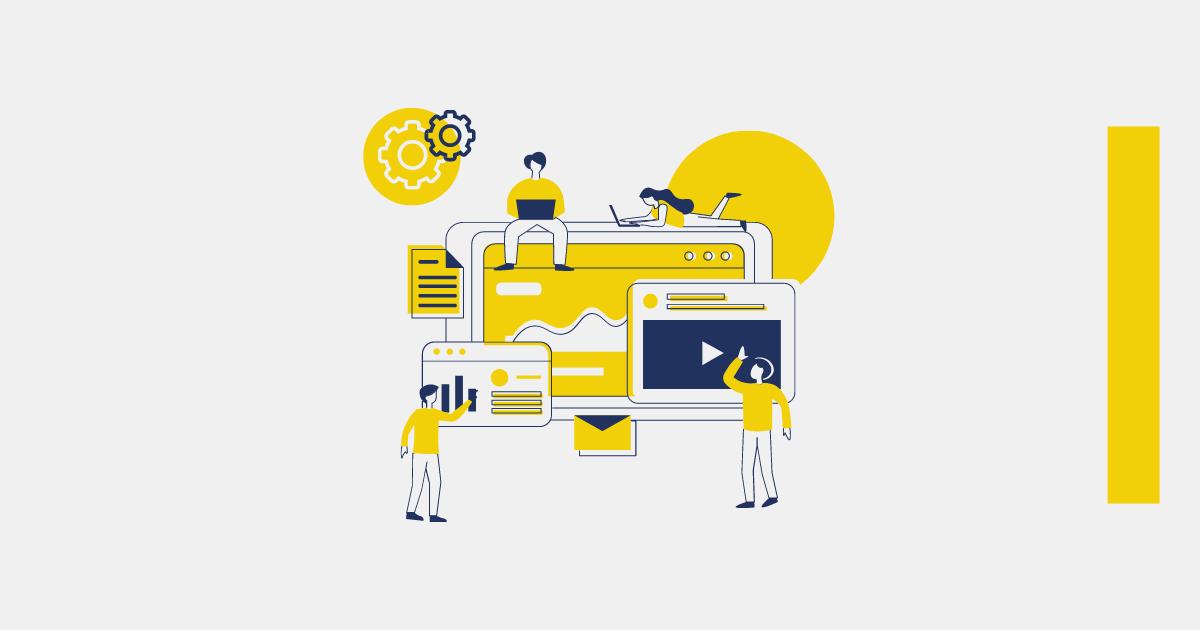
Omnichannel eCommerce is a sales approach that takes advantage of multiple channels so that a customer can start a purchase journey in one place and finish it in another.
This follows on from the idea of multichannel commerce, whereby a retailer has many ways a customer can engage with the brand such as websites, apps, physical stores and social media. Omnichannel retail takes these multiple touchpoints and makes the experience consistent and seamless between them, often leading from one to the other.
For example, if someone visits your store asking for a particular item they saw on the website, an omnichannel experience would be to quickly look it up for them and if it’s not in stock, seamlessly ordering it for delivery to their home address from the warehouse. This lets customers know they can get what they want easily and engage your brand from multiple points.
What are the benefits to the retailer?
Stay competitive
The retail space is getting harder and thanks to world events over the last few years, more and more physical stores have had to increase their online presence and improve their deliveries. This means more retailers are taking an omnichannel approach, and if you take one too you can stay competitive.
Get a cohesive message
No matter how good your initial message is, its power multiplies if your audience sees the same themes and ideas repeated in different places. Omnichannel marketing is about consistency across platforms, and the ability to approach the audience with the same message in more than one place serves as an excellent nudge to persuade your customers of the value of your brand because it seems like you’re everywhere.
Data collection from multiple points
Cookies, apps and Facebook pixels can help you build up an unparalleled picture of your customers. If you have an app linked to a customer account, you get even match up shopping habits and demographic information. With all this information, you can understand your customers better than ever before.
Become your customers’ favourite retailer
Omnichannel retail is both flexible and responsive because customers can choose how and when they shop. Due to this, they’re more likely to shop with you than just buy things from the easiest place.
What are some omnichannel techniques?
Synchronise your social media
Make sure you’re on Pinterest, Instagram, Facebook and Twitter and that your photography is up to scratch. While these platforms have different approaches, it wouldn’t hurt to share the same posts across each because seeing the same thing in different places helps build familiarity and even unconscious trust. Include purchase links or product codes for all the items you showcase so purchase is only a few clicks away. Use the same or similar messaging across channels but remember that an effective post on one platform might look slightly different from an effective post on another platform. Make sure your CTAs are specific to the medium, even if they lead to the same place.
Create an app for a seamless mobile purchase experience
When people can purchase via an app it gives you a direct opportunity to guide them as they shop and also offer features that will persuade them to purchase. This can mean different things for different businesses but if you have a retail shop, an app could easily help shoppers locate your stores, plan their visit and create a wish list for the next time they shop. If your main presence is online, it could help customers track their order and give them updates when their purchases have shipped.
An app is also a great place to keep track of two things – reward points and gift cards. Gift cards are an incredible opportunity for customers to gift your goods or services in situations that might otherwise make it tough. For example, if you sell coffee, it’s a hard thing to wrap up a full cup and leave it under the tree for Christmas, but an easy thing to do with a gift card. Reward points are also an incredible way of building loyalty amongst your customers by offering an extra incentive to stay with your brand.
Use data wisely
Platforms such as Facebook can optimise your advertising to reach particular demographics, and Meta’s integrated approach means that you can target the same users across both Facebook and Instagram. Not only that, but you can re-target people who have previously shown interest in your brand. All this adds up for highly-targeted, cost-effective marketing plans.
Reduce waits and queuing
Nobody has time for anything nowadays, which is why reducing wait times can be a powerful way to win the loyalty of your shopping audience. Two examples of effective omnichannel implementation include a restaurant that allows customers to pay via an app or website, rather than wait for their server to return, and a retail store that allows shoppers to pay for their goods simply by talking to any sales associate who can run up the sale on a tablet, removing the need to queue.
The bigger your brand, the greater the benefits
In this article we’ve talked about solutions for retail stores and large websites. While its true that a larger company will certainly benefit from an omnichannel approach, there’s a lot of potential for a more modestly sized start-up to become an omnichannel leader and help define their place in the market too. Either way, the omnichannel approach is helping businesses engage and make the most of their user-base.
Reach out to us to help you build an Omnichannel eCommerce for your business.
